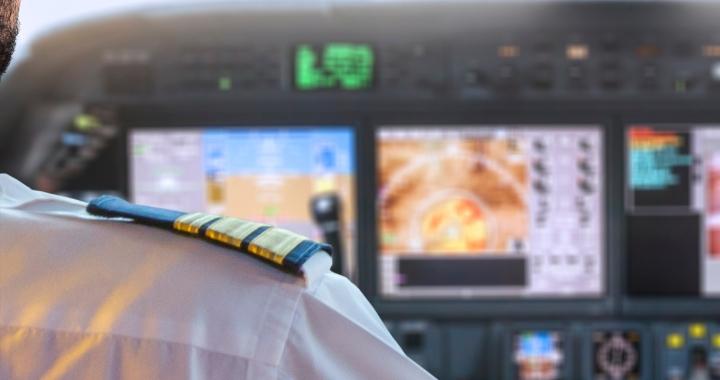In the world of aviation, maintaining level flight is a fundamental skill. Whether you’re a student pilot or an experienced aviator, the concept of power is paramount. Aircraft rely on power to remain within safe flight parameters, and mastering its management is essential for safe and efficient operation. At the heart of this understanding lies the aviation power curve, a graphical representation that forms a U-shaped speed range.
In this post, we will delve into what the power curve in aviation signifies and how it influences the way we fly.
Before you dive in, be sure to check out our range of JetBeds. Made in the USA, Jetbeds are the most comfortable way to fly!

What Is Aviation Power Curve?
The aviation power curve is a fundamental concept for pilots. It serves as a graphical representation of the relationship between airspeed and the power required to maintain altitude during various phases of flight. Its significance lies in the insights it provides to aviators about the dynamic interplay between airspeed and power, essential for safe and efficient flight operations.
To grasp the dynamics of the aviation power curve, it’s normal to see pilots practicing slow flight, a controlled maneuver where the aircraft maintains level flight at minimum safe airspeed. In slow flight, the plane operates on the high angle of attack side of the power curve. The flight instructor guides the student on how to maintain altitude. This typically requires such a student to add power to compensate for the induced drag at these low speeds.
Another significant aspect of the aviation power curve is the concept of the “region of reverse command“. In this region, as airspeed decreases, the power required to maintain altitude increases. This might sound counterintuitive, as we are accustomed to the idea that reducing power slows the aircraft down. However, in slow flight, the higher angle of attack leads to an increase in induced drag. This means additional power is needed to prevent a stall and maintain level flight.
For pilots, comprehending the aviation power curve is crucial. It aids them in making informed decisions regarding power settings to maintain safe and controlled flight. The power curve provides insights into how power adjustments impact airspeed and altitude, offering the knowledge required to operate the aircraft within safe flight envelopes. It equips pilots with the ability to make real-time adjustments to manage the aircraft’s performance effectively, ultimately contributing to flight safety and success.
Behind The Power Curve Meaning
When an aircraft is “behind the power curve,” it means it’s operating in a flight condition where the required power (thrust) to maintain altitude and airspeed is significantly higher than what is available. In simpler terms, the aircraft is struggling to generate the necessary lift to stay aloft, often due to a combination of slow airspeed and a high angle of attack.
It is vital for pilots to properly understand the concept of being behind the power curve. It highlights the critical importance of maintaining the appropriate airspeed and power settings to ensure safe and controlled flight. Falling behind the power curve can lead to an aerodynamic stall, where the aircraft loses lift and begins to descend rapidly. This situation is extremely dangerous, particularly at low altitudes or during critical phases of flight like takeoff and landing.

Why Pilots Should Avoid Getting Behind the Power Curve:
Avoiding being behind the power curve is a fundamental principle in aviation for several reasons:
- Safety: Being behind the power curve increases the risk of a stall, which can lead to a loss of control and potential accidents. Safety is paramount in aviation, and staying within the aircraft’s safe flight envelope is a primary concern.
- Control: Staying ahead of the power curve ensures that the pilot maintains control over the aircraft. It allows for responsive and predictable handling, especially during maneuvers or unexpected changes in flight conditions.
- Efficiency: Operating within the optimal airspeed and power settings ensures that the aircraft is flying efficiently. Being behind the power curve can result in excessive fuel consumption and reduced overall performance.
- Stability: Staying ahead of the power curve promotes a stable and predictable flight profile. This is particularly crucial during critical phases of flight, such as takeoff, approach, and landing.

How To Avoid Getting Behind The Power Curve
Maintain proper airspeed.
One of the primary methods to avoid getting behind the power curve is to maintain the proper airspeed for your current flight phase. Flying too slowly can increase the angle of attack, leading to increased drag and the risk of stalling. Be vigilant about keeping your aircraft’s airspeed within the recommended range for your current configuration and phase of flight.
Likewise, when you’re in a situation where you need to quickly regain airspeed or altitude, the phrase “full power” becomes particularly significant. Throttling up to full power can provide the necessary thrust to recover from a situation where the aircraft might be lagging behind its optimal power curve.
Use appropriate power settings.
Selecting the right power settings is essential in avoiding the pitfalls of being behind the power curve. Pilots should be well-versed in their aircraft’s performance charts and recommended power settings for various flight conditions. Ensure that you are providing sufficient power to maintain a safe and efficient airspeed, especially during critical phases like takeoff, approach, and landing.
Be mindful of weight and balance.
The weight and balance of the aircraft play a crucial role in maintaining proper flight performance. Ensure that your aircraft is loaded within its specified weight and balance limits. An improperly loaded aircraft can affect its ability to maintain the required airspeed and power settings, potentially pushing it behind the power curve.
Monitor the Angle of Attack.
The angle of attack (AOA) is a critical parameter that pilots should monitor closely. In flight, when you raise the nose of the aircraft, your angle of attack increases. An excessive AOA can push the aircraft behind the power curve. Use your aircraft’s AOA indicator or stall warning system to keep the angle of attack within safe limits. Be aware of your aircraft’s critical AOA and avoid exceeding it.
Stay ahead of the aircraft.
A proactive approach is vital in aviation. Anticipate changes in flight conditions and adjust your airspeed and power settings accordingly. If you foresee a need to add power or change configuration, make these adjustments early to ensure you stay ahead of the power curve.
Be wary of critical phases.
Particular attention should be given to critical phases of flight, such as takeoff and landing. During these phases, maintaining proper airspeed and power settings is paramount. A loss of control during these times can have severe consequences. Stay within recommended parameters and use checklist procedures to help you stay on course.
Adopt continuous training and awareness.
Pilots should undergo regular training to enhance their skills and knowledge. Training should include recognition and recovery from potential situations behind the power curve. Stay informed about your aircraft’s performance characteristics and operational limitations.
Use advanced technology.
Leverage the benefits of modern technology, including digital flight displays and advanced avionics systems that provide real-time data on airspeed, angle of attack, and power settings. These tools can help you maintain optimal flight conditions and avoid getting behind the power curve.
Comprehending the aviation power curve is a vital aspect of pilot training.
The knowledge of the aviation power curve is integral to safety management systems in aviation. It equips pilots with the understanding and skills necessary to respond to changes in airspeed, altitude, and aircraft performance. Even more, it allows pilots to maintain precise control over their aircraft’s performance, particularly in conditions requiring slower flight. A pilot’s ability to navigate the power curve and make effective power adjustments directly contributes to overall flight safety.
For more information on all things around aviation technology from the international flight plan format to how to calculate landing distance, check out our blog. And, if you’re looking for an easy and convenient tool that will help you and your crew avoid flight fatigue, explore our fleet of JetBeds to find the one that best fits your aircraft!

